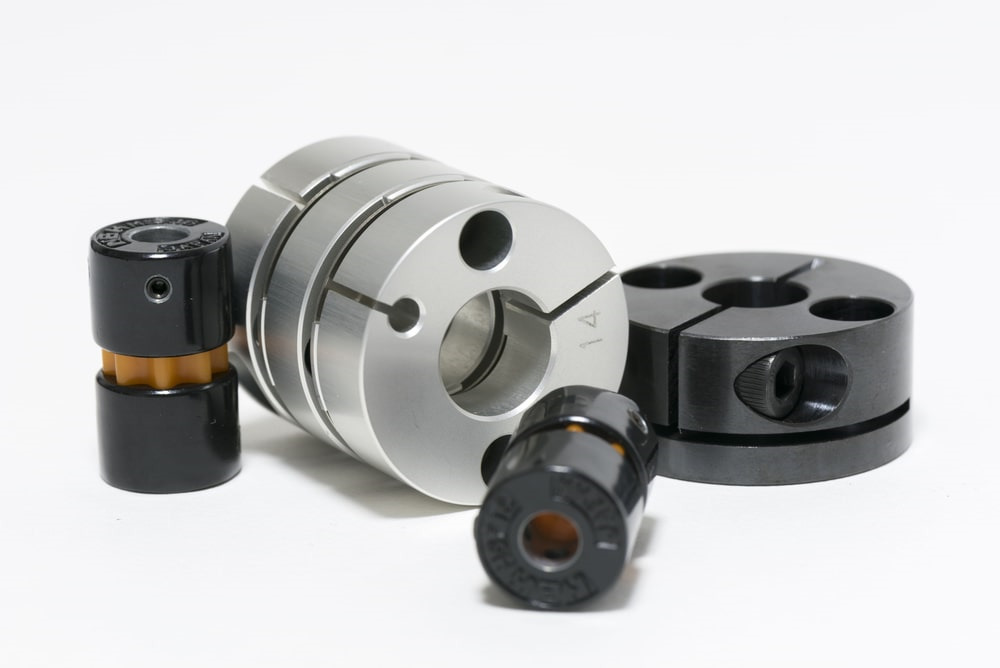About Shaft Couplings
A shaft coupling is a mechanical aspect that connects the drive shaft and driven shaft of a electric motor, etc.,  in order to transmit vitality. Shaft couplings expose mechanical flexibility, offering tolerance for shaft misalignment. Subsequently, this coupling flexibility can reduce uneven have on on the bearing, products vibration, and additional mechanical troubles because of misalignment.
in order to transmit vitality. Shaft couplings expose mechanical flexibility, offering tolerance for shaft misalignment. Subsequently, this coupling flexibility can reduce uneven have on on the bearing, products vibration, and additional mechanical troubles because of misalignment.
Shaft couplings are available in a tiny type mainly for FA (factory automation) and a large casting type used for huge power transmission such as in wind and hydraulic ability machinery.
In NBK, the former is named a coupling and the latter is called a shaft coupling. Right here, we will speak about the shaft coupling.
Why Do We Need Shaft Couplings?
Even if the engine and workpiece are directly connected and appropriately fixed, slight misalignment can occur over time due to changes in temperature and improvements over an extended period of time, causing vibration and damage.
Shaft couplings serve as an important connect to minimize effect and vibration, allowing clean rotation to end up being transmitted.
Flexible Flanged Shaft Couplings
Characteristics
These are the most famous flexible shaft couplings in Japan that adhere to JIS B 1452-1991 “Flexible flanged shaft couplings”.
A simple structure made of a flange and coupling bolts. Easy to install.
The bushing between your flange and coupling bolts alleviates the consequences of torque fluctuation and impacts during startup and shutdown.
The bushing could be replaced simply by removing the coupling bolt, enabling easy maintenance.
Permits lateral/angular misalignment, and reduces noises. Prevents the thrust load from getting transmitted.
2 types can be found, a cast iron FCL type and a carbon steel?FCLS type Flexible Shaft Couplings
Shaft Coupling Considerations
In selecting couplings a designer primary must consider motion control varieties or power transmission types. Most action control applications transmit comparatively low torques. Power tranny couplings, in contrast, are made to carry moderate to excessive torques. This decision will narrow coupling choice relatively. Torque transmitting along with maximum permissible parallel and angular misalignment values are the dominant considerations. Many couplings will publish these values and using them to refine the search should make picking a coupling style less complicated. Optimum RPM is another essential attribute. Maximum axial misalignment may be a consideration aswell. Zero backlash is certainly an essential consideration where feedback is employed as in a motion control system.
Some power tranny couplings are made to operate without lubricant, which may be an advantage where maintenance is a concern or difficult to perform. Lubricated couplings often require covers to keep carefully the grease in. Various couplings, including chain, equipment, Oldham, etc., can be found either seeing that lubricated metal-on-metal kinds and as metal and plastic hybrids where usually the coupling element is made of nylon or another plastic-type to eradicate the lubrication requirements. There exists a reduction in torque capability in these unlubricated forms compared to the more conventional designs.
Important Attributes
Coupling Style
The majority of the common types have been described above.
Maximum RPM
The majority of couplings have a limit on their maximum rotational quickness. Couplings for high-velocity turbines, compressors, boiler feed pumps, etc. generally require balanced models and/or balanced bolts/nuts to permit disassembly and reassembly without increasing vibration during procedure. High-speed couplings can also exhibit windage results in their guards, which can cause cooling concerns.
Max Transmitted Horsepower or perhaps Torque
Couplings are often rated by their optimum torque capacity, a measurable quantity. Power is definitely a function of torque times rpm, and so when these values are stated it is generally at a specific rpm (5HP @ 100 rpm, for instance). Torque values will be the more commonly cited of the two.
Max Angular Misalignment
One of the shaft misalignment types, angular misalignment capability is usually mentioned in degrees and represents the maximum angular offset the coupled shafts exhibit.
Max Parallel Misalignment
Parallel misalignment capacity is usually given in linear devices of inches or millimeters and represents the utmost parallel offset the coupled shafts exhibit.
Max Axial Motion
Sometimes called axial misalignment, this attribute specifies the maximum permissible growth between your coupled shafts, granted generally in inches or perhaps millimeters, and can be caused by thermal effects.